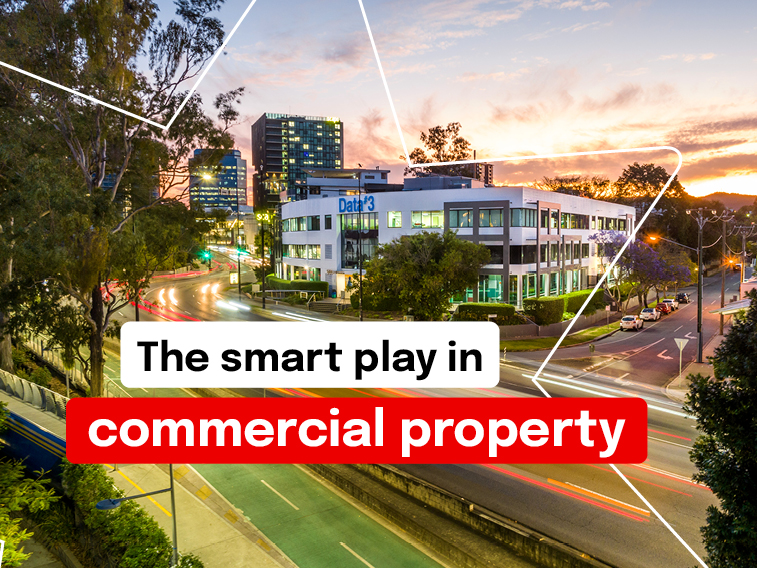Firmer consumer and steady outlook


Insight
Best-in-class energy efficiency isn’t only for new-builds. One Queensland company is making smart moves when it comes to retrofitting sustainable infrastructure to existing commercial property.

Build a commercial property from scratch and it’s possible to consume less energy than the average Australian home – even to generate more energy than the building actually needs.
But what about existing buildings? Can they be retrofitted to dramatically reduce energy use – while also achieving other financial gains?
Absolutely, according to commercial real estate investor Exceed Capital.
The Brisbane-based company has built a robust business buying and managing commercial properties on behalf of investors. More recently, as part of its “wealth creation” mission, its focus has turned to upping the energy efficiency – and hence the energy rating – of its properties.
As far as the company’s management is concerned, it makes good business sense. “As time evolves, the energy efficiency rating of a building will become increasingly important to tenants, buyers and even financiers,” Exceed Capital Fund Manager Wayne O’Loughlin says.
“Being ahead of the curve, and having the best possible energy rating for your buildings, is going to help you when it comes to leasing. And through investing in the right initiatives, you will also have a more profitable asset during your period of ownership. When you want to sell that asset, it’s going to open it up to the largest possible buyer pool, which will allow you to achieve the best possible outcome on sale.”
O’Loughlin points to Exceed Capital’s Gold Coast property – 154 Varsity Parade – as a good example. A series of improvements has boosted its NABERS (National Australian Built Environment Rating System) score from 4.5 to 6 stars – both the top score offered by the government-run body and a market-leading one.
It wasn’t by chance that Exceed Capital chose a 4.5-star rated building to upgrade. As O’Loughlin points out, the likely significant financial investment required to upgrade the underlying infrastructure of a property rated at 3 stars or fewer may not justify the cost.
“There would likely be easy wins that could improve it to 3.5 or 4 stars,” he says, “and you may get your operational costs down in doing so, but that won’t be enough to attract premium tenants.”
A 5 or 5.5-star rated building, in contrast, will be cheaper to upgrade and, even if it generates the same amount of income, will ultimately sell for a better price if it achieves 6 stars. “It is more attractive to larger institutional buyers and also smaller buyers with sustainability and environmental responsibility on their mind,” O’Loughlin explains.
The other upside is the major A-grade tenants such buildings attract.
“We have completed negotiations with multiple major corporate tenants and government entities recently,” O’Loughlin says. “In those agreements, it is a condition to maintain a NABERS rating of either 5.5 or 6 stars. Without having already achieved that rating, we wouldn’t have been able to secure those tenants. That may have led to longer vacancy periods, which impacts fund performance.”
The new rating for Varsity Parade was particularly gratifying given it was achieved within Exceed Capital’s first year of ownership. As soon as the company sealed the deal, it sought to achieve what O’Loughlin describes as “easy wins” –installing solar panels on the roof and LED lighting throughout.
Various initiatives to encourage responsible energy use among tenants were also implemented. For instance, leases included a clause that required the tenant to pay an additional charge if they used air-conditioning outside standard hours. “We found that to be pretty effective,” O’Loughlin says.
This energy-saving behaviour was further supported by installing push buttons in the tenancies that allow air-conditioning to be used after-hours but that switch off automatically after a 2-hour period to prevent any units from being left on unintentionally overnight.
And it wasn’t just electricity use that was targeted. Other strategies included flow restrictors to reduce the building’s water consumption and facilities to measure individual tenant waste output to add accountability and encourage responsible behaviour.
Aside from improving the longer-term outlook of its assets, Exceed Capital enjoys more immediate financial benefits thanks to its focus on energy efficiency.
Electricity use in the common areas of the Varsity Parade property, for example, costs less, as does water. And there are other opportunities. The company has a waste reduction strategy in place at another of its properties that it’s looking to apply elsewhere.
Whatever the issue, it pays to proceed with care and think any upgrades through. “It’s like anything,” O’Loughlin says. “You can over-capitalise and not get the benefits, so you’ve got to take a cost-benefit approach.”
Nevertheless, there are wins to be had. “If you pick the right suppliers and take the right environmental initiatives – to improve your energy rating, water rating, things like that – it does improve your bottom line,” O’Loughlin says. “We can be supporting the environment while doing what we’re paid to do, which is adding value to the property and improving returns for our investors.”
As NAB Director of Sustainable Lending James Bentley notes, there are lessons for all of us in Exceed Capital’s story.
“No doubt some sustainability initiatives can be particularly complex,” Bentley says. “But there are many small initiatives we can all pursue that can add up to significant financial and environmental benefits.
“The Exceed story provides a great case study of the value we can generate if we take the time to embed a focus on sustainability into our business planning and investment strategy.”
© National Australia Bank Limited. ABN 12 004 044 937 AFSL and Australian Credit Licence 230686.